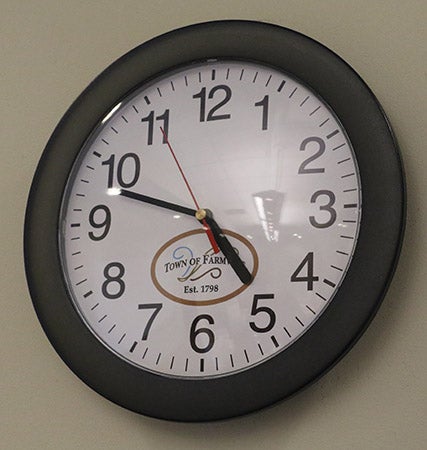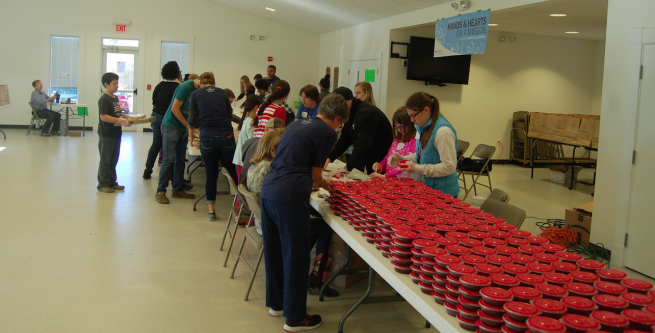Walking tour celebrates history: Partnership highlights places, people and events
Published 10:49 am Thursday, September 29, 2016
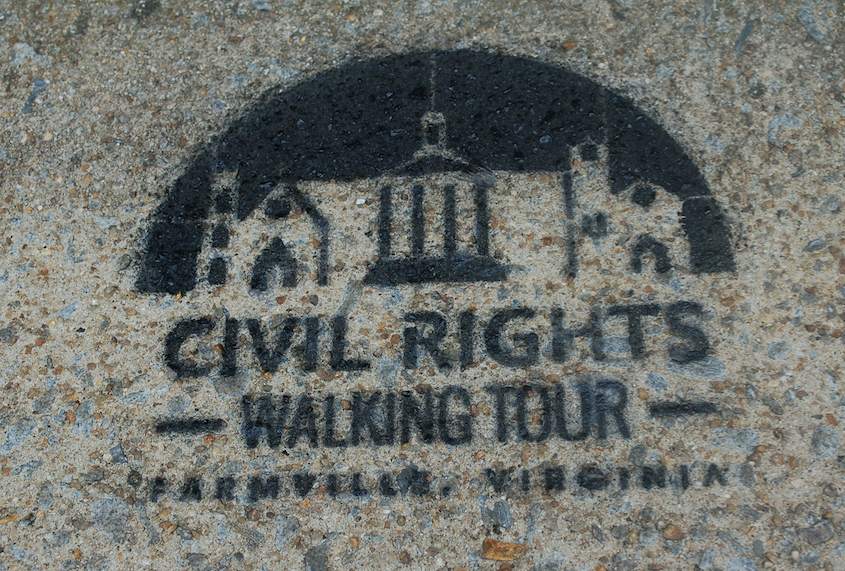
- JORDAN MILES | HERALD This stencil has been painted on sidewalks, designating walking tour stops throughout town.
The first phase of Farmville’s first Civil Rights Walking Tour — a joint venture of several community partners — is in place.
This week, the town painted stencils on sidewalks in front of businesses, churches and other locations part of the collaborative project involving the Moton Museum, Farmville Downtown Partnership (FDP) and Longwood University.
The walking tour includes locations on High Street, Main Street, West Third Street, North Street and Griffin Boulevard, according to project organizers. The locations tell the story of Farmville’s rich civil rights history — one involving 16-year-old Barbara Rose Johns’ 1951 student-led protest for better schools from what was then R.R. Moton High School and the closing of county schools for five years to avoid integration.
“We had a community forum in the beginning of the year to solicit input from members of the community on sites that will be of interest to them and how we should interpret them,” FDP President John Miller told Farmville Town Council members recently.
Some locations on the walking tour include the Beulah AME Church and parsonage, First Baptist Church, the Prince Edward Courthouse, The Farmville Herald, Dr. N.P. Miller’s office, the Confederate Statue, the home of the late Gordon Moss, the home of the late Martha E. Forrester, the Moton Museum and J.J. Newberry Co. — a business where the Rev. Everett
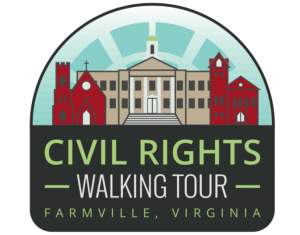
The Civil Rights Walking Tour logo promotes the Prince Edward County Courthouse and downtown churches.
Berryman Jr. participated in a sit-in protest many years ago.
“It’s very important,” Berryman, who was in the sixth grade in 1959 when the schools closed in Prince Edward, said. “It’s always good to know a little bit of history as to how certain things began, and the tour is important to discover exactly some of the personal experiences and things of concern that maybe have happened to individuals that we were all well aware of at that time.”
He said it was important to “go back and think about some of the things that really happened and to see where we were and to see where we are now and to see what we need to do to improve on what we did back years ago.”
“Part of the Main Street program’s approach is historic preservation, and I believe that extends to memorializing the experiences that make our downtown historical,” Miller told The Herald in a separate interview.
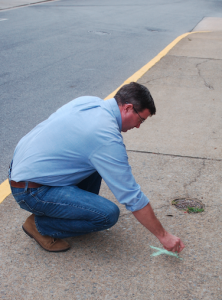
JORDAN MILES | HERALD
Farmville Downtown Partnership President John Miller kneels, marking the location of a stencil on a sidewalk that will guide participants.
According to Dr. Larissa Smith Fergeson, Longwood University’s liaison to the Moton Museum, the first phase includes 17 sites “connected to the history told at the Moton Museum, focusing on the years 1951-64. The sites are designated with a stencil on the sidewalk that has the (Civil Rights Walking Tour) logo.”
The self-guided tour winds downtown, and participants use a brochure with photos and text as a guide.
“It will also have a mobile website that will have geolocating ability,” Miller said. “So, if you’re walking up … if you don’t start the tour, but you’re shopping at Pairet’s and you’re walking by, you see one of these markers right there on the sidewalk … You can Google it, the site will come up and have geolocating (ability).”
The mobile application, which includes photos, text and oral history, will be implemented as part of a future phase.
“There had been discussions with (Fergeson) and others about recognizing how the civil rights history of the community extends beyond the walls of Moton,” Miller said, “and we thought telling this story would encourage people to visit Farmville to understand it.”
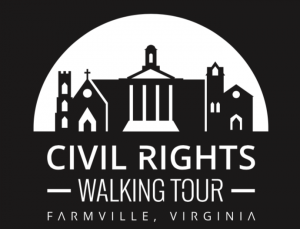
JORDAN MILES | HERALD
Stencils designate the locations of the first phase of the Civil Rights Walking Tour in Farmville.
The existing stops “are part of only an initial round of sites focused on the events from 1951-64,” Miller stressed. “We ultimately aspire to include locations that narrate the history of the black business and residential community that existed along South Main Street and Ely Street (now Griffin Boulevard).”
According to Fergeson, the project is supported with funding from the Virginia Foundation for Humanities in Charlottesville.
“We are grateful to the Farmville Town Council and Town Manager (Gerald) Spates for their support of the project,” she said.
Because organizers have space limitations in the brochure, Fergeson said, “the website will include more details about the sites. Additional historic photographs, primary documents and audio recordings of first-person recollections of the history will also be included. The website will also discuss more recent efforts by members of the Farmville community to acknowledge this past and to work at reconciliation, such as The Farmville Herald’s support of the creation of the Brown Scholarships in 2004 or the Johns Memorial Episcopal Church’s apology in 2013 for its actions during the civil rights era.”
Organizers are planning to promote the tour to residents, Moton Museum visitors, school groups, and visitors interested in Southern and civil rights history.
“We’re also hoping to win grant funding in the near future that will allow us to advertise the tour in regional and national publications as well as social media sites,” he said.
Fergeson said the tour’s first phase “is a means to connect the Moton Museum to downtown Farmville. For visitors who come to the museum, we want them to be able to spend more time and explore downtown. For visitors who come to downtown, we want them to get intrigued by the town’s civil rights history and come up Main Street to visit the museum.”
Miller said he wants the tour to preserve stories that many may be unfamiliar with “in spite of driving by these locations every day — events so crucial to the nation’s aspiration to egalitarianism. Practically speaking, I also hope this tour will encourage tourism in Farmville so we can show the rest of the state and nation and world the rich history and diverse present our town has to offer.”
Fergeson, a professor of history at Longwood University, said she wants her students and other young people to see there were many facets to the civil rights movement.
“I want them to understand how history is all around them and that at times, they are literally following in the footsteps of the people who went before them. I hope it inspires them to see that change in America, while difficult to make, is possible and that as citizens they have a role to play in making that change happen,” Fergeson said.



